17 interesting facts about Van Gogh's Sunflowers (19 photos)
Vincent Van Gogh is a Dutch post-impressionist artist, a genius with a very difficult fate. He has a whole series of paintings with one single theme: bouquets of sunflowers. Today these works are certainly the artist’s calling card. But why did he draw them again and again? 
Leo Jansen, curator at the Van Gogh Museum, says that very few people know about the existence of the series of sunflower paintings: "For nine out of ten people I tell, this is news."
Martin Bailey, who published the book My Sunflowers: The Story of Van Gogh's Masterpiece, agrees: “Many people know one of the Sunflowers and are not even aware of the existence of the whole series.”
Vincent Van Gogh, self-portrait 
Vincent Van Gogh wanted to become a famous sunflower artist. In a letter to his brother Theo, Van Gogh boldly declared: “The sunflower is, in a sense, mine.”
Other artists of the time considered sunflowers to be crude and unrefined, but this is precisely what attracted Vincent: he saw eternal and enchanting beauty in this imperfection. For the artist, sunflowers were also a symbol of gratitude and happiness, radiating the energy and vitality of the sun.
It was in Arles, in the Yellow House, that Vincent Van Gogh's great sunflower period began: “I am thinking of decorating my studio with half a dozen paintings of sunflowers,” said the artist. And so he did, painting at least 11 paintings known to us, some of which are now lost. Another interesting fact: there are a total of 87 sunflowers in the 11 paintings.
Vincent was very careful about the use of colors in his paintings - the colors had to complement each other and create perfect harmony. Almost 90% of his paintings used blue and yellow as complementary colors. “To arrange the colors correctly in a picture,” Van Gogh wrote to his sister Wil, “so that they shimmer and stand out with their contrasts, is something like inlaying with precious stones or creating costumes.”
Yellow was one of the artist’s favorite colors. At the beginning of his work he used bright yellow colors, later adding other shades such as ocher and cadmium yellow.
Van Gogh deeply admired Claude Monet, so some of his influence can be seen in the flower paintings - the powerful and expressive color palette and quality of the design.
Monet painted the Vase of Sunflowers about seven or eight years before Vincent van Gogh created his series. However, Monet paid more attention to the composition as a whole, and, unlike Van Gogh, he depicted sunflowers without signs of wilting.
The flower, always facing the sun, became the hallmark of Vincent van Gogh's short but truly remarkable career. After the artist's tragic death, his doctor, Paul Gachet, made a symbolic drawing with the inscription "Le Tournesol" ("Sunflower"), and also planted sunflowers on the grave. Paul Gauguin grew sunflowers in Polynesia in memory of his deceased friend.
Here are some more interesting facts related to the sun flower, which shed eternal light on the difficult and unhappy life of Vincent Van Gogh.
1. 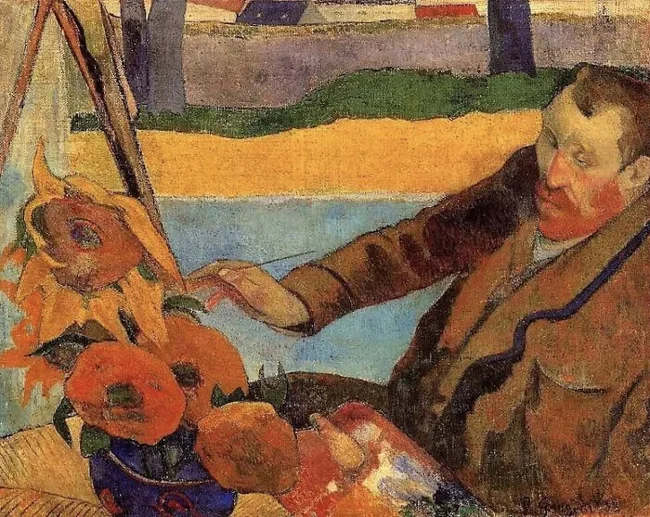

When Van Gogh lived in the Yellow House in Arles (France), Paul Gauguin, who came to visit him, depicted Vincent at work, painting a canvas called “The Painter of Sunflowers.”
2.
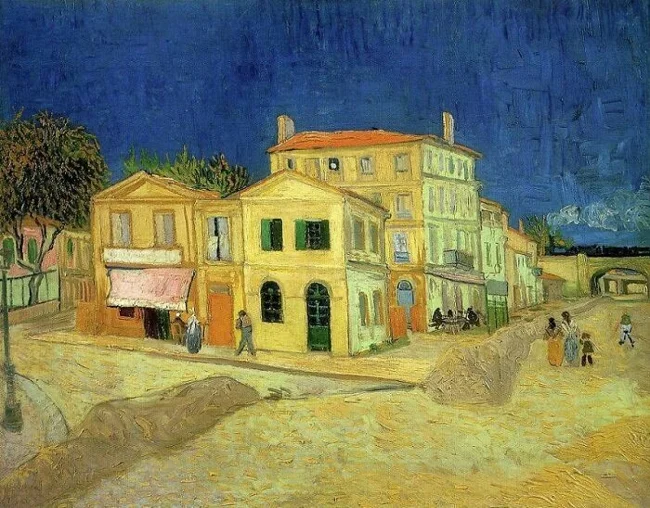
The “Sunflowers” series is closely related to the Yellow House, in which the artist rented 4 rooms. He planned to turn the yellow corner building into a home for artists where like-minded people could live and work together. Van Gogh planned to decorate the place with his sunflower paintings.
3.
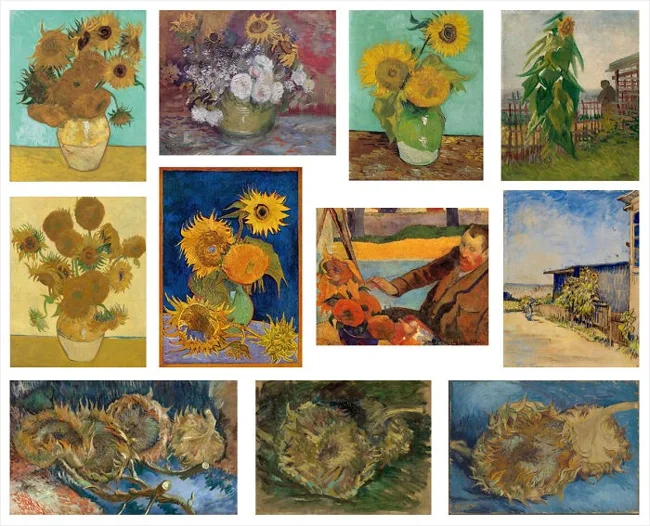
Van Gogh painted 11 works in which sunflowers are the main subject, and even more works in which they play a role. One of them was destroyed in a fire in Japan during the bombing of Osaka during World War II.
4.
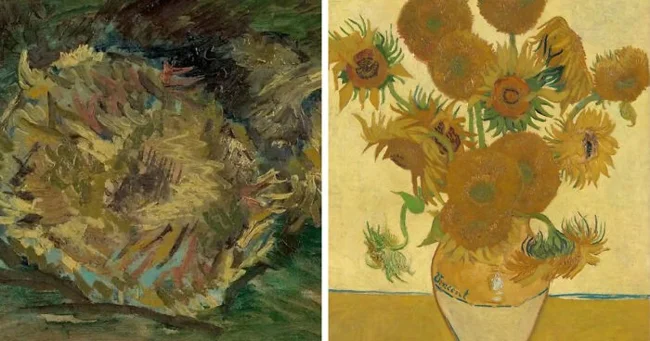
The first painting, made in Paris in 1887, depicts flowers lying on the ground, and the second, made a year later in Arles, shows a bouquet of sunflowers in a vase.
5.
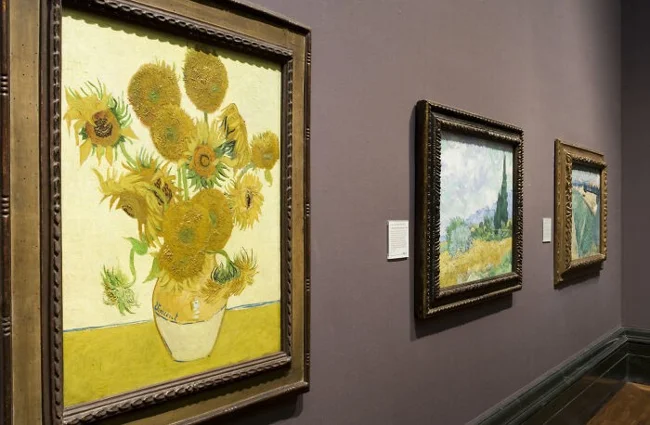
One of the original works in the Sunflowers series is part of the collection of the National Gallery in London, and former Prime Minister Margaret Thatcher once asked to see “Van Gogh's chrysanthemums.” Nobody even thought to correct her.
6.
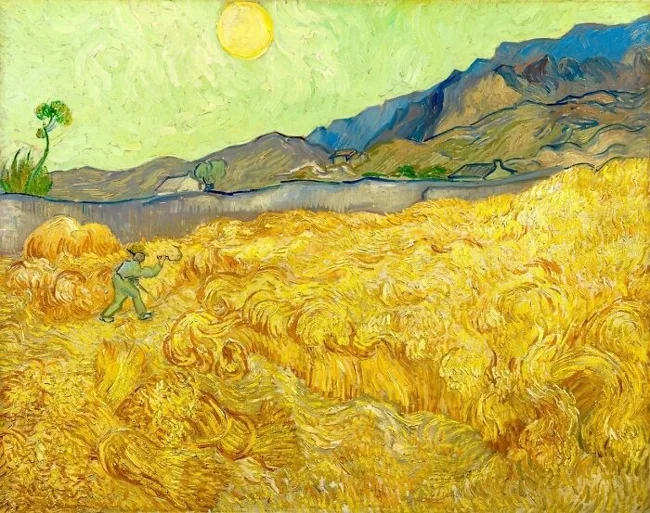
Yellow was Vincent Van Gogh's favorite color and was present in most of his paintings - sunflowers, ears of wheat, harvest landscapes and the yellow color of the sun. Beginning with his period in Arles, the color yellow became increasingly important in the artist's paintings.
7.
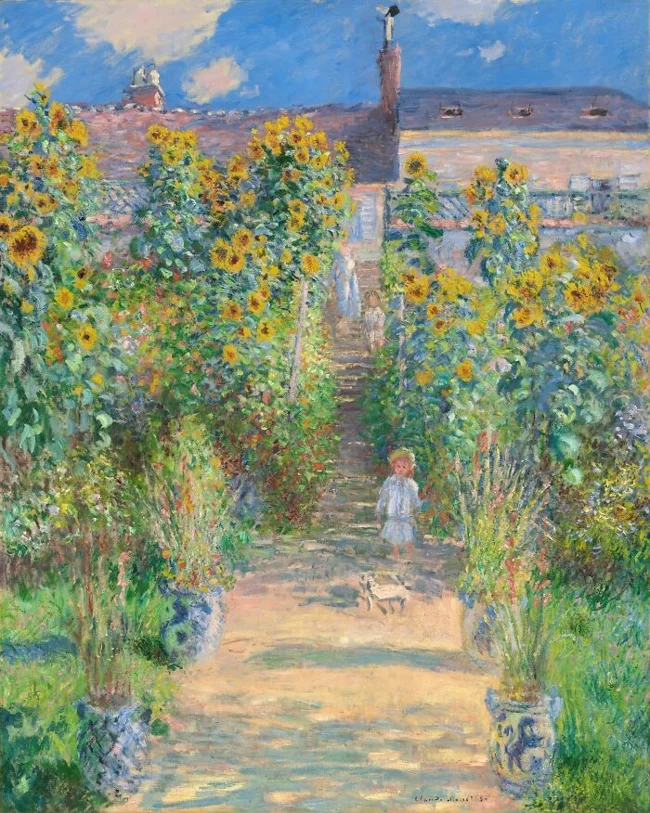
Van Gogh wasn't the only one inspired by sunflowers. William Blake in the late 1700s, Claude Monet in 1881, and Allen Ginsberg in 1955 are some of the other famous artists and poets who drew attention to the image of sunflowers.
8.
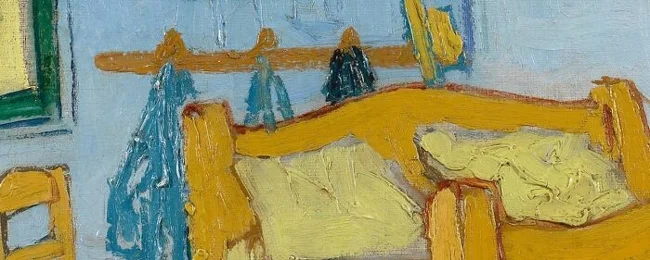
Van Gogh celebrated the completion of Sunflowers by going shopping. The artist began his series of "Sunflowers" on Monday, August 20, 1888 and finished on Friday. Immediately after this, he went into town to do some shopping, after which he returned with a black velvet jacket and the famous large yellow straw hat. In the painting Van Gogh made for his bedroom two months later, both objects hang behind his bed.
9.

During their first meeting in Paris in 1887, Van Gogh and Paul Gauguin exchanged a pair of paintings: Van Gogh gave two studies of sunflowers, and Gauguin gave the painting "On the Shore of a Lake in Martinique (Negro Women)" from 1887.
10.
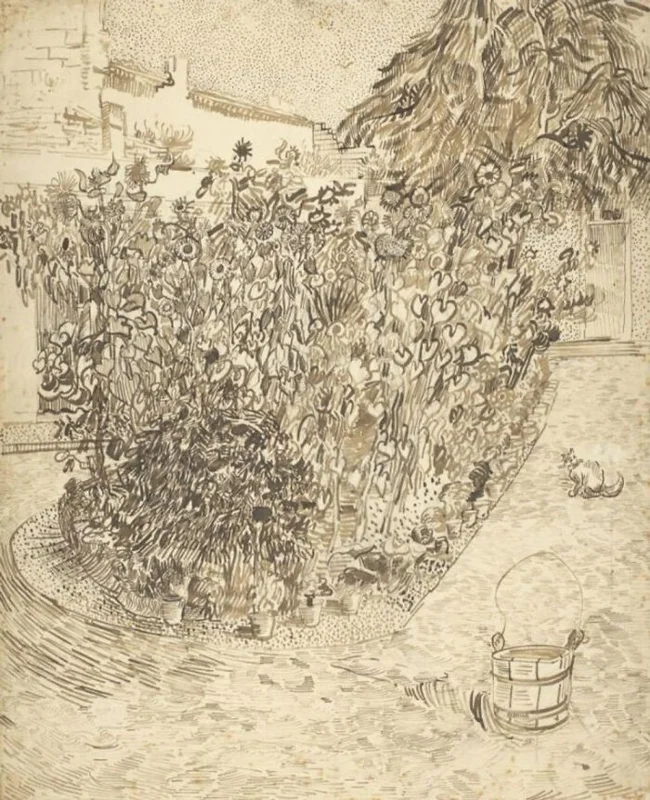
A week before starting work on his series of paintings, Van Gogh painted sunflowers in the garden of a bathhouse located in the brothel quarter.
eleven.
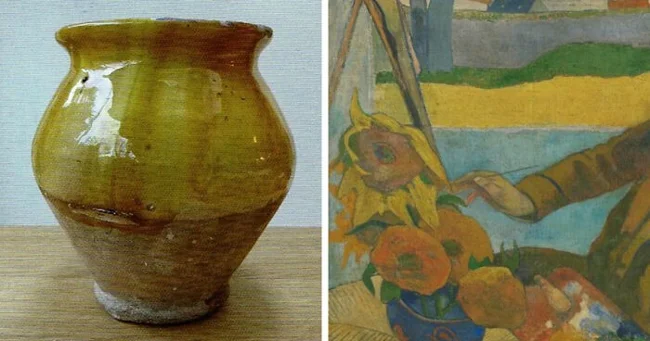
In fact, Van Gogh did not paint flowers in a pot because the pot he had on hand was not stable enough to hold the heavy flowers and was in danger of tipping over. It is assumed that a similar pot stood in the artist’s kitchen-studio and served as his model, but 15 sunflowers actually did not fit in it.
12.
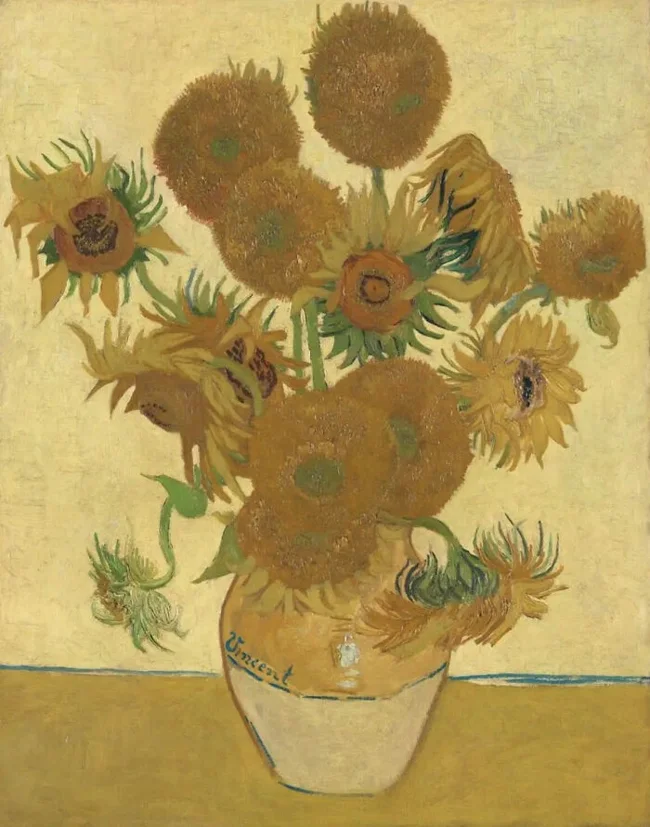
Vincent van Gogh's sunflowers caused a huge scandal in 1890 at the exhibition of the art association Les XX ("Society of Twenty"), an exhibition organized exclusively for members of the club in Brussels, Belgium. Two days before the opening, Henri de Gros declared that his work would not be exhibited next to "the disgusting pot of sunflowers of Monsieur Vincent or any other agent provocateur." At the opening dinner, de Gros again attacked Van Gogh's paintings, calling him "an ignoramus and a charlatan."
13.
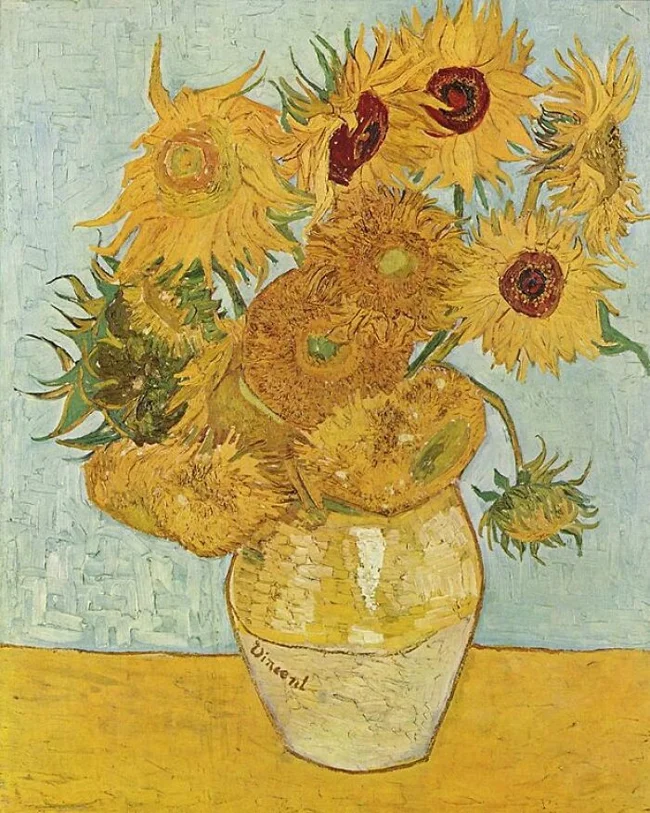
To create the vibrant sunflowers, Van Gogh used a bright, rich cadmium yellow pigment, which was first developed in the mid-19th century.
14.
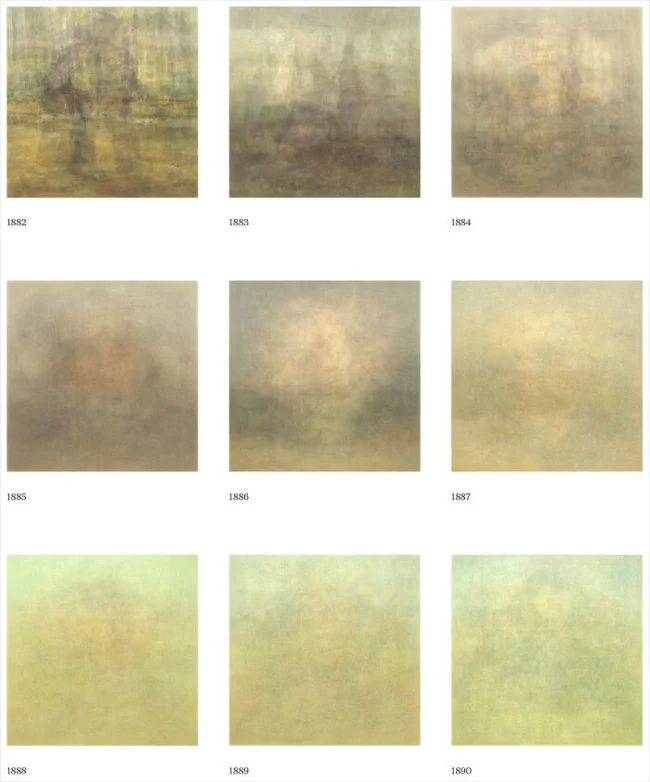
From 1888, Van Gogh changed his color palette towards lighter yellow shades. Researchers believe this was due to illness/medications leading to "yellow vision" or the influence of the French Impressionists while working in Paris.
15.

Jo Bonger, Theo's widow, had an affair with the Dutch artist Isaac Israels in the mid-1890s. In 1918, she lent him the painting “Sunflowers with a Yellow Background.” Israels hung it in his living room and included it in paintings of various models (but not Joe).
16.
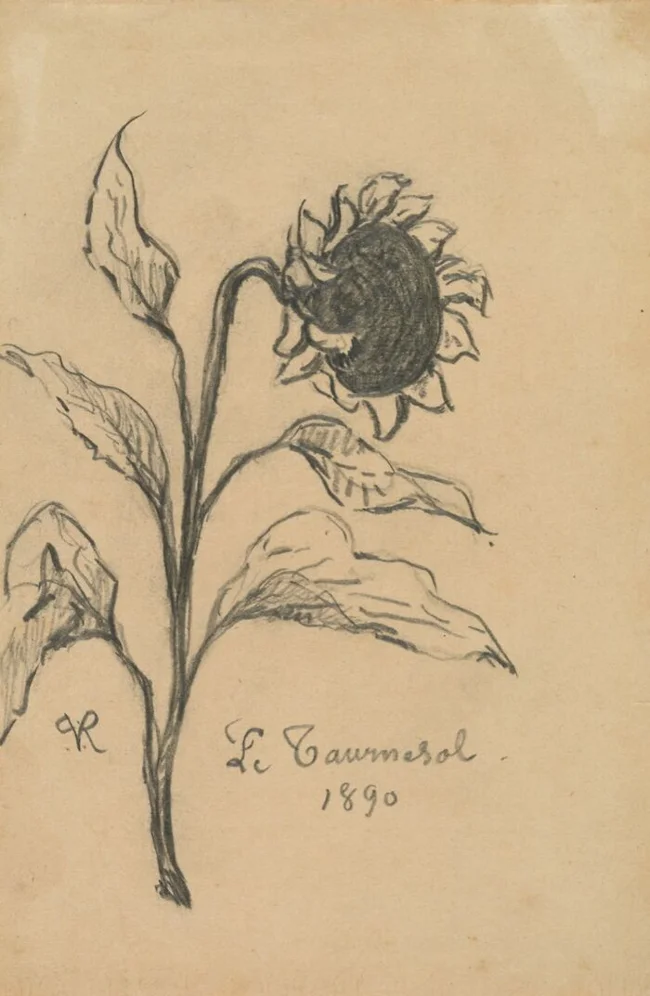
After Vincent's tragic death, his doctor Paul Gachet painted a piercing, lonely sunflower. For those close to Vincent, the flower facing the sun became inextricably linked with the artist.
17.
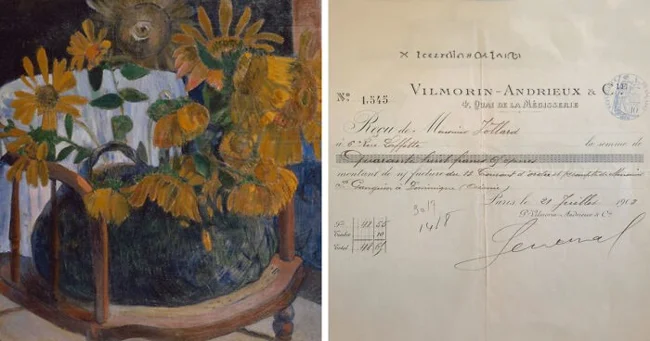
In 1901, Gauguin painted four still lifes of sunflowers in Tahiti as a tribute to his long-departed friend Van Gogh. Gauguin grew flowers from seeds brought from France.

